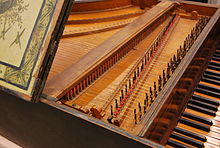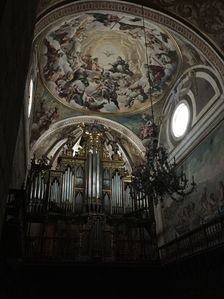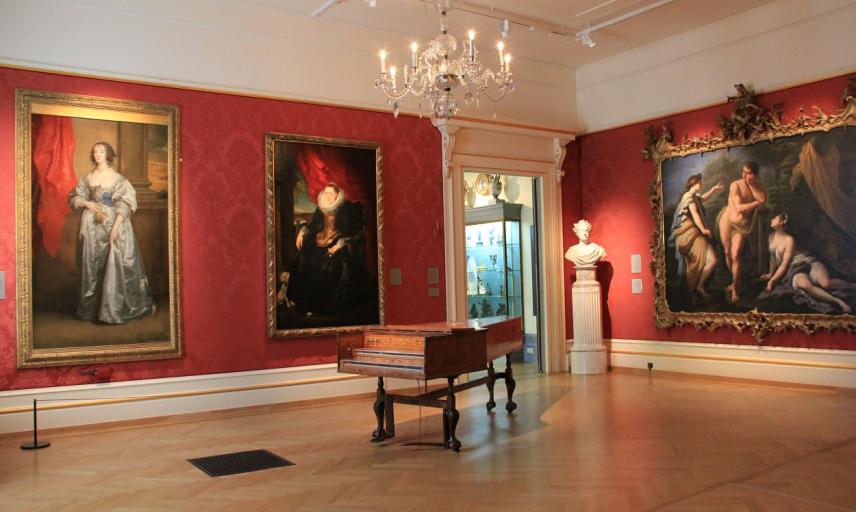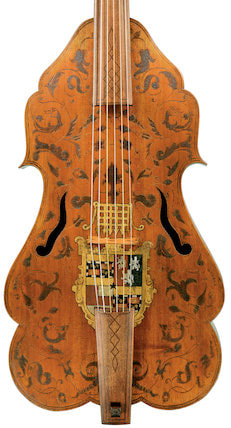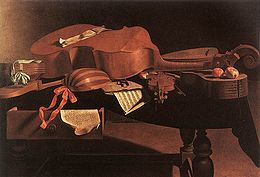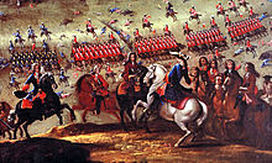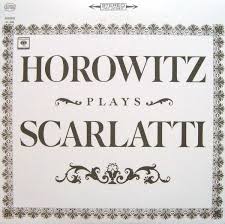1600- 1750
|
Bach dominated Europe, Purcell and Handel worked in England, Dacquin and Couperin in France, Scarlatti in Spain. Vivaldi's music was widely played at the time, but he wrote almost nothing for keyboards and concentrated on music for instrumental groups or consorts.
Baroque music uses and perfects the art of counterpoint. Back in the Renaissance, harmony had happened as a side effect of polyphony. Each part had its own patterns and in vocal music very often its own words too, which made the more ornate compositions quite confusing to listen to! In early Baroque music we start to hear chord progressions, with a distinct bass line giving a sense of direction and momentum. Melodies are picked out more vividly, and all the other voices work together in the service of the harmony. BAROQUE STYLE
Baroque music uses more sustained themes with clear melodies often passed from one part to another. Small rhythmic elements will be repeated throughout a piece to give a sense of unity, and there is more variety and precision to these rhythms.
Baroque music has more emotional intensity than Renaissance music, and a Baroque piece often depicts a single emotion or affect (such as joy, grief, or piety). This period also sees a growing amount of music written for virtuoso singers and instrumentalists, so is harder to perform than Renaissance music. There is more ornamentation, often improvised. BAROQUE INSTRUMENTS
Instrumental pieces gradually became more important than a capella vocal music. The harpsichord and the organ were the important keyboard instruments of the time.
It is important to make decisions about how to perform music of the Baroque with an understanding of what contemporary instruments sounded like and how they worked. There were no pianos; many of the features of the music are there because it was designed for a very different type of keyboard instrument.
The harpsichord worked by plucking the strings inside when a key was played. The sound was quieter, had a different timbre, and died away quickly. The best and biggest harpsichords had more than one set of strings, more than one keyboard, and levers and pedals to activate these so that it was possible to get a variety of sounds from the instrument. Even on these instruments, the sound still decayed quickly, and that is why longer notes have to be trilled or repeated to keep them sounding. And a crescendo or a diminuendo could not be achieved in the same way as on a piano. There were smaller keyboard instruments - the virginals or the spinet.
The violin of these times looked and sounded much like it does today: some of Stradivari's from the 1700s still survive ... for millionaires to play.
Other instruments have changed more - viols were a type of early cello; lutes and recorders were important too. |
CONTEXTSBaroque music in Britain and Germany could be seen as the film score to the Reformation, the backing track to the Enlightenment.
The Stuarts gave way to the Hanoverians in England; the French courts and palaces were home to a long troupe of Louis'; the Hapsburgs and Bourbons ruled Spain. The Thirty Years War in Europe and the English Civil War took place before 1700, and there were Wars of Succession in Spain, Poland, Austria and Italy. It was a bad time to be a young man - or a horse - and a very good time to be a musket maker. BAROQUE STRUCTURE
From the simple roots of such forms as the ricercare, fantasia and canzona of the Renaissance, the variety and scope of Baroque musical structures is impressive. In the church, Mass settings became ever grander. Bach and Handel produced large-scale Cantatas and Oratorios for choir and soloists, supported by the organ or a small orchestra.
For keyboardists, dance suites and partitas were played at home or with friends, while the more extended preludes, fantasias and fanfares were written for use in church and at court. An amazing combination of mathematical order and elaborate invention created the Fugue which perhaps best defines the Baroque sense of the importance of form and structure.
WHERE DID MUSIC HAPPEN?While much music was produced for church and court, the leisured classes also gathered together to make music and to dance.
Gradually there came to be two streams of music - music for the rich and music for the poor - in a way that had not been seen before. Music that was written down was generally performed in the court, very wealthy households, or in church. And that about was it. So the music that has mostly survived for us to play is 'composers' music like this. But of course wherever people gather they like to sing and dance, so tavern songs and dance music certainly happened. It was only occasionally gathered up and written down and it had to work on whatever instruments were available. | ||||||||||||||||||
